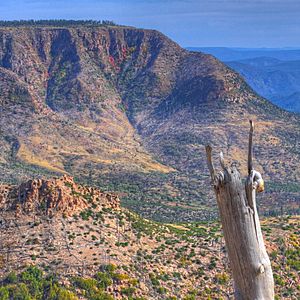Bailey Ruin facts for kids
Quick facts for kids |
|
|
Bailey Ruin
|
|
| Lua error in Module:Location_map at line 420: attempt to index field 'wikibase' (a nil value). | |
| Nearest city | Pinedale |
|---|---|
| Area | 12.4 acres (5.0 ha) |
| Architectural style | Pueblo |
| NRHP reference No. | 05001560 |
| Added to NRHP | March 17, 2006 |
Bailey Ruin is an ancient archaeological site in Navajo County, Arizona, United States. An archaeological site is a place where people find old objects and buildings. These help us learn about how people lived in the past. This special site is also called "Stott Ranch Ruin" and "Pope Ranch Site."
The Bailey Ruin was added to the National Register of Historic Places on March 17, 2006. This means it is a very important place for history and archaeology. It helps us understand the ancient people who lived there.
The site was once a village built by the Ancient Puebloans. These were Native American people who lived in the Southwestern United States. They lived at Bailey Ruin from about 1275 to 1325 AD. This time is known as the late Pueblo III Era to the early Pueblo IV Era.
Where is Bailey Ruin?

The Bailey Ruin is mostly found in a large forest. This forest is full of ponderosa pine trees. It is part of the Apache–Sitgreaves National Forests. Some parts of the ruin are also on private land.
The site is about 1.6 miles (2.6 km) from the Mogollon Rim. The Mogollon Rim is a huge cliff that stretches across Arizona. The ruin sits at a high elevation of about 6,808 feet (2,075 m).
What Was the Bailey Ruin Like?
The Bailey Ruin was a large village. It had many buildings with two or more stories. There were between 200 and 250 rooms in total. The village grew slowly over time, from 1275 to 1325 AD.
Around the year 1300, more rooms were added. These new rooms helped to enclose a central plaza. A plaza is an open area, like a town square. The people living there had several ways to get water. There was a wet, marshy area called a cienega about 660 feet (200 m) away. There were also natural springs nearby. Today, there are only shallow wells from more recent times.
Who Explored Bailey Ruin?
People became interested in studying Bailey Ruin even before the 1900s.
- J. Walter Fewkes visited the site in 1897. He was part of an expedition for the Smithsonian Bureau of American Ethnology. He called the site the "Stott Ranch Ruin."
- Emil W. Haury explored the site in 1927 and 1929. He worked for the Gila Pueblo Archaeological Foundation and the National Geographic Society. The site's name changed as the land changed owners. When Haury first visited, it was called the "Pope Ranch Site." Later, it was named after the new owner, George W. Bailey. During his 1927 visit, Haury looked for samples for tree-ring dating. This is a way to find out the age of wood by looking at its tree rings.
- More studies of the area were done in the 1980s.
- In 1993, a project called the Spring Creek Archeological District included digging at the site. This digging, called excavation, helps archaeologists uncover buried objects and structures.

